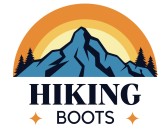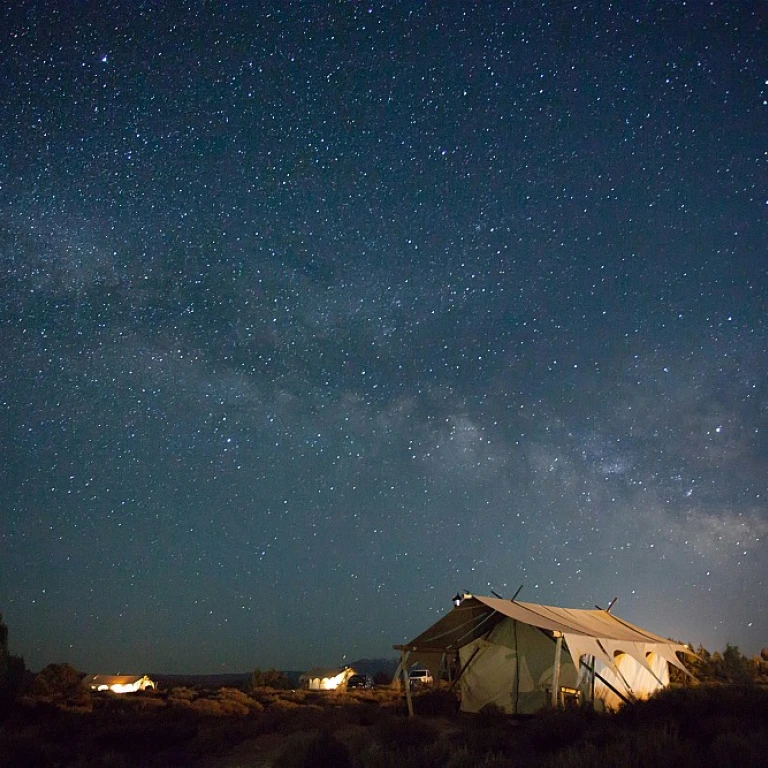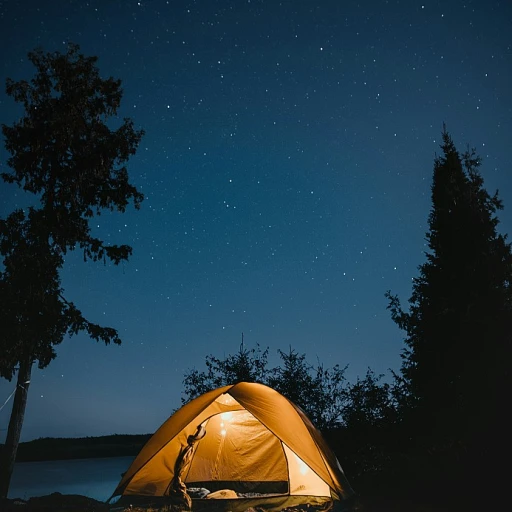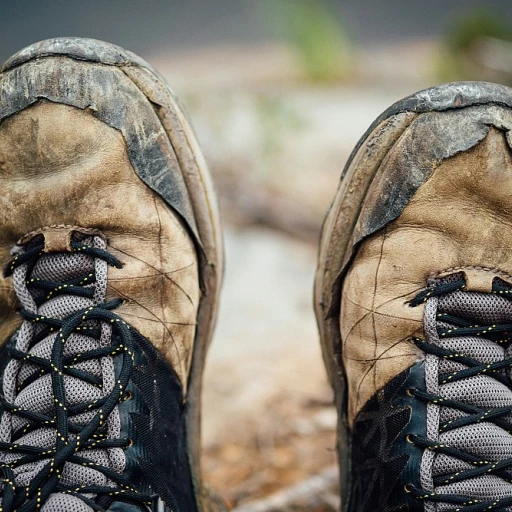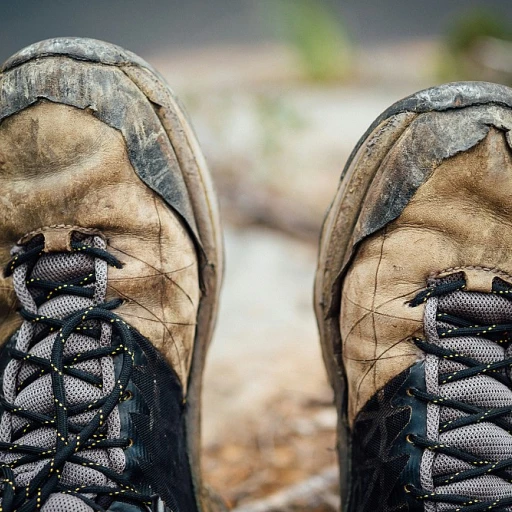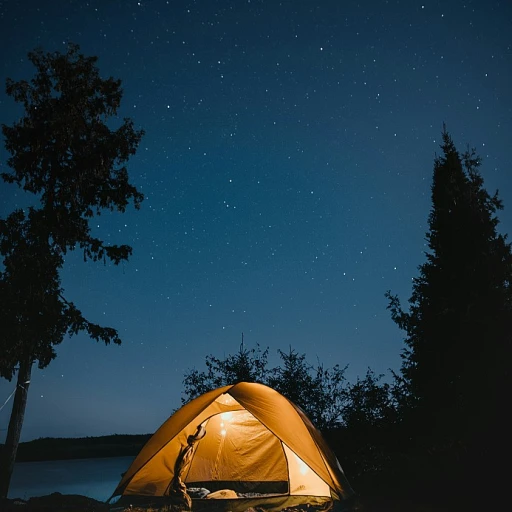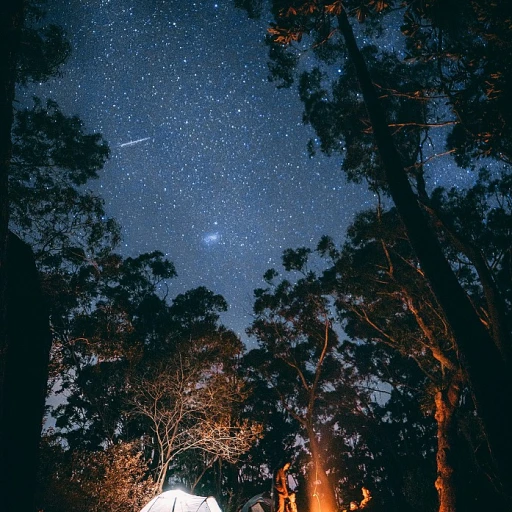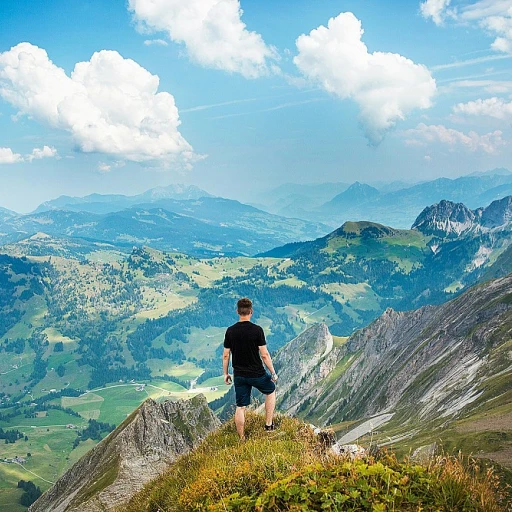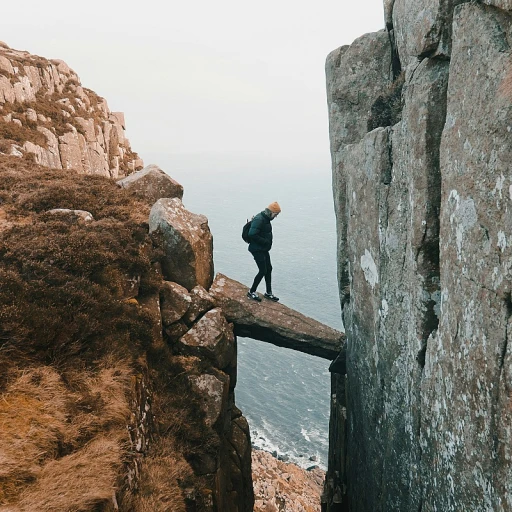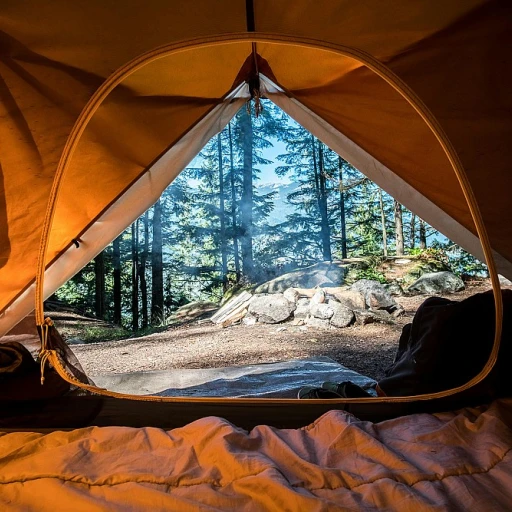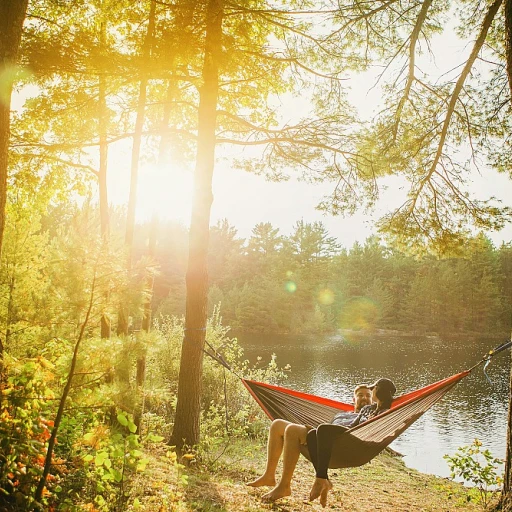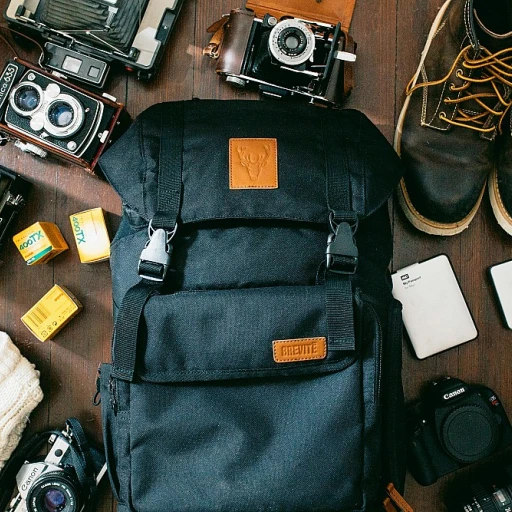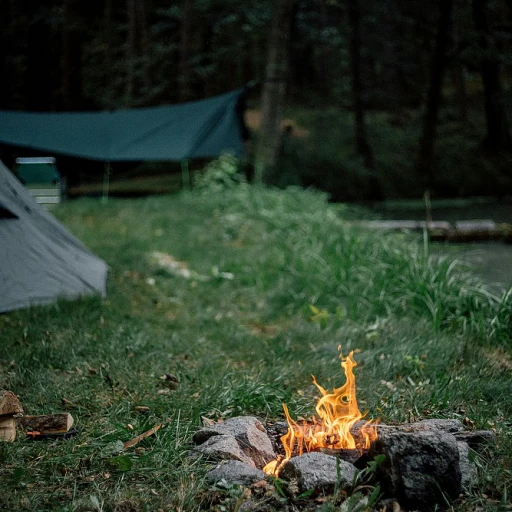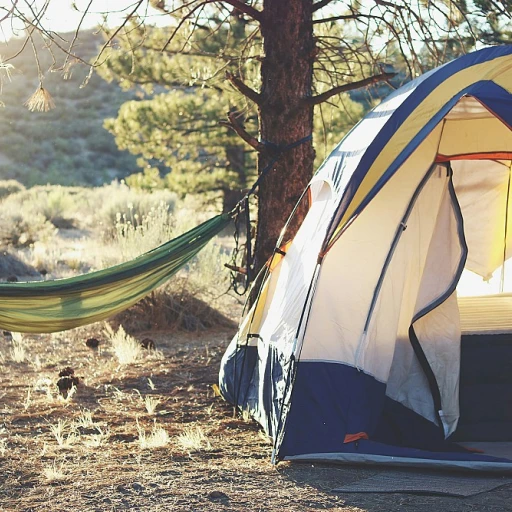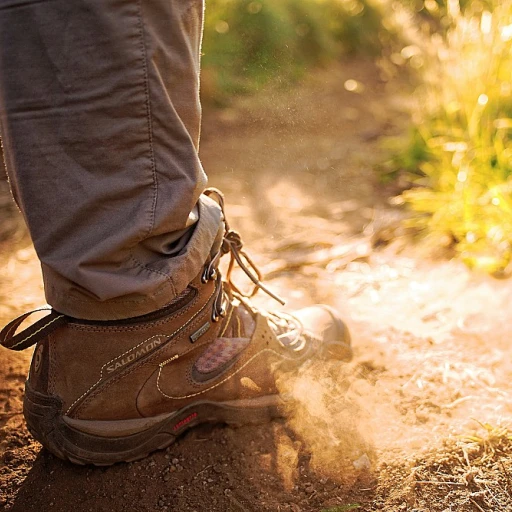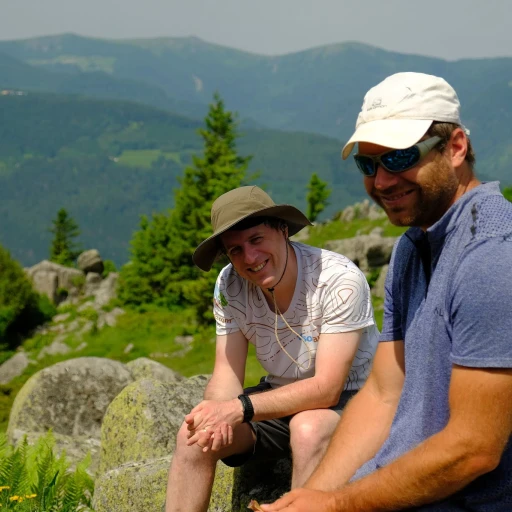
Understanding Your Journey's Demands
Knowing Your Trail and Its Challenges
Embarking on a backpacking trip is more than just strapping on a pack and heading out. The first step is understanding what kind of adventure you're in for. Are you planning a day trip or a multi-day trek? Will you be hiking through dense forests, scaling rocky terrains, or traversing open fields? Each of these environments demands a different approach and gear selection.
Before you start packing, research the trail conditions, weather forecasts, and any potential hazards. Knowing whether you'll need lightweight clothing for a hot day or a rain cover for unexpected showers can make all the difference. It's also wise to check if permits are needed or if there are any specific regulations, like bear canister requirements. For more on bear canisters, check out this guide.
Assessing Your Physical and Mental Readiness
Backpacking isn't just about physical endurance; mental preparation is key too. Reflect on your fitness level and experience. If you're new to hiking, start with shorter, less challenging trails to build your stamina. Seasoned hikers might be ready for longer, more demanding trips, but it's still crucial to assess your current condition.
Consider your comfort with solitude, as some trails may not see much foot traffic. Are you prepared to handle unexpected situations, like a sudden change in weather or a minor injury? Having a basic first aid kit and knowing how to use it can boost your confidence and safety.
Planning for the Unexpected
Even with the best-laid plans, nature can be unpredictable. Always have a backup plan. Share your itinerary with someone you trust and establish check-in times. Carry a map, compass, or GPS device, even if you're familiar with the trail. A small, lightweight water filter can be a lifesaver if you run out of water, and a whistle can help signal for help if needed.
Remember, preparation is your best friend on any backpacking trip. By understanding the demands of your journey, you'll be better equipped to enjoy the experience safely and comfortably.
Essential Gear for Safety and Comfort
Must-Have Items for Your Backpacking Trip
When you're out on a long backpacking trip, the right gear can make all the difference between an enjoyable adventure and a challenging ordeal. Safety and comfort are your top priorities, so let’s talk about what you need to pack to keep things on track.
Footwear That Goes the Distance
Your hiking boots are your best friends on the trail. Choose a pair that fits well and offers solid ankle support. Look for waterproof materials to keep your feet dry when the weather takes a turn. And don't forget those trekking poles—they're great for balance on uneven terrain.
Clothing Layers for Every Climate
Weather can be unpredictable, so it’s wise to pack layers. A base layer that wicks moisture, an insulating layer for warmth, and a waterproof jacket will keep you prepared for anything. Always pack a hat and gloves, even in summer; temperatures can drop quickly at higher elevations.
Rest Easy with the Right Sleeping Gear
After a long day on the trail, a good night’s sleep is essential. A lightweight sleeping bag suited to the season and a comfortable sleeping pad will help you recharge. If you’re going to be camping in wet conditions, a tent with a reliable rain cover is a must.
Stay Safe with Essential Tools
- Aid kit: A compact first aid kit is a must for any backpacking checklist. Include bandages, antiseptic wipes, and pain relievers.
- Water filter: Clean water is non-negotiable. A portable water filter or purification tablets will ensure you stay hydrated.
- Navigation tools: A map and compass are essential, even if you have a GPS device. Batteries can die, but a map won't.
Personal Care for Long Days
Small items can have a big impact on your comfort. Lip balm, sunscreen, and toilet paper are essentials you shouldn’t leave behind. A rain cover for your backpack will protect your gear from unexpected showers.
For more detailed guidance on preparing for your adventure, check out this comprehensive guide.
Food and Hydration Strategies
Fueling Up with the Right Food and Hydration
When you're out on a long backpacking trip, your pack isn't just carrying gear – it’s your ticket to survival. Let’s dive into what fuels your adventure. It's not just about loading your backpack with any amount of calories but focusing on the best balance. High-energy snacks and meals are key. Granola bars, nut mixes, and small packs of dried fruits make for lightweight choices that pack a punch. When planning your backpacking checklist, remember that hydration is everything. A trusty water filter can be your best friend if you're not keen on carrying too much water. And, don't forget a reusable water bag or bottle. The ultra-light collapsible bottles? They're simply great for saving space.Pack Smart, Eat Better
Long trips mean you’ll need a smarter strategy. For some, freeze-dried meals or meal kits offer convenience without weighing down their bag. They're often lightweight and only require boiling water – which you can easily get from a pocket stove if it's on your packing list. Multi-functional food is another boon. Items that do double duty, like oatmeal (a breakfast staple and energy booster), save space and simplify your meal plan. Always pack some toilet paper, not just for the obvious – trust us, you'll thank us later.Finding Water in the Wilderness
In the great outdoors, it’s all about making use of what’s available. While good hiking boots might take you to the water sources, always make sure they're safe to drink. A portable filter or a purification tablet can ensure you have clean water without extra bulk. For day trips, pack fillers like flavored hydration tablets or electrolyte-packed powders. They enhance water and keep you refreshed. And, a sea summit collapsible bowl is not only lightweight, it's perfect for dipping into streams or lakes. The key takeaway with food and hydration? Plan well, pack right, and you'll energize every part of your day-tripping or backpacking endeavors. For more insights, check out our in-depth resources here.Choosing the Right Shelter and Sleeping Gear
Choosing the Right Nighttime Nest
When you're out on a long backpacking trip, your tent is more than just a shelter—it's your home away from home. Picking the best tent means balancing weight, space, and durability. A lightweight tent is a great option, but make sure it's sturdy enough to withstand the elements. If you're hiking in an area prone to rain, a rain cover is essential to keep your sleeping bag and gear dry.Sleeping Gear That Keeps You Cozy
Let's talk about sleeping bags and sleeping pads. A good sleeping bag is like a warm hug after a day trip through the wilderness. Consider the temperature rating and choose one that suits the climate of your backpacking trip. Pair it with a sleeping pad for added comfort and insulation from the cold ground. Sea to Summit offers some top-notch options that are both lightweight and compact.Space-Saving Tips for Your Kit
Packing efficiently is key to a successful backpacking trip. Your backpack should be organized, with heavier items like water and food close to your back for balance. Use small bags or packing cubes to keep your gear sorted. This not only saves space but also makes it easier to find what you need without unpacking everything.Personal Stories from the Trail
I remember my first long hike, where I underestimated the importance of a good sleeping pad. After a sleepless night on rocky ground, I learned my lesson. Now, I never hit the trail without my trusty pad. It's those little things that make all the difference on a backpacking checklist.Final Thoughts
Your choice of shelter and sleeping gear can make or break your backpacking adventure. From tents to sleeping bags, each piece of gear plays a role in ensuring a comfortable night under the stars. So, take your time to choose wisely and enjoy every moment of your time in the great outdoors.Packing Tips for Efficiency and Balance
Smart Packing Tactics for Your Trail Adventure
When it comes to packing up for a long trip, organization is your best friend. It's a game changer in ensuring you'll have everything you need without overloading yourself. Start by laying out all your backpacking gear on the floor. Take a look at your trusty pack, and make sure it's ready for the task—study those straps and pockets because they're about to become your new best pals. Next up, the key move: balance. Keep heavier items like water and those heavy scuba-like sleeping bags or sleeping pads in the center of your bag, close to your back. This helps with maintaining balance, making sure you're not teetering down the trail like a seesaw. Even your bulky sea summit tent can sit right on top or hang out on a side pocket. Don't forget those smaller necessities! Your base layer, rain cover, and aid kit need their own strategic homes too. I learned the hard way once when my lip balm got buried deep in my bag and my lips paid the price. Keep essentials within easy reach for a more enjoyable journey. Packing a lightweight day pack for short hikes or exploring from your base camp is a winning tactic. Load it up with a water filter, toothbrush, and just a smidge of toilet paper. This small bag can tag along on your explorations, giving you flexibility for those on-a-whim day trips. An intelligently organized pack not only makes your backpacking trip smoother but also matches well with sustainable and minimalist packing practices. Limit your kit to the essential gear; a true ‘less is best’ approach! And honestly, no packing list would be complete without the tools of the trade: trekking poles. They're the unsung heroes of balance and support on unpredictable terrain. Just remember to give them a little space according to your packing checklist—they're as important as those trusty hiking boots on any adventure!Sustainable and Minimalist Packing Practices
Pack Smarter, Not Harder
Embarking on a long backpacking trip calls for packing with intention. Aiming for a minimalist approach doesn’t mean you’re skimping on comfort or safety. In fact, it usually means you’re being smart about what you pack and how you pack it.
Start by sifting through your hiking gear and prioritize lightweight, multi-functional items. Mother Nature doesn’t always cooperate, so a rain cover for your bag is a sound investment. Fill that best backpack with a compact water filter over carrying extra water; it'll spare your back aches while keeping you hydrated on those extended backpacking trips.
Embrace Minimalism with a Personal Touch
It’s easy to throw in a dozen base layers out of fear of the unknown. However, excessive extras can turn a pleasant backpacking adventure into a cumbersome slog. Choose a few articles that can easily be layered. A single versatile base layer can be washed during your trek and dried by the campfire overnight.
Consider your sleeping set-up. A lightweight tent, high-quality sleeping bag, and a compressible sleeping pad often offer the best balance between comfort and packability. The Sea to Summit line, known for embedding effective function with smart packing designs, might be worth checking out for gear that doesn’t weigh a ton.
Small but Mighty Necessities
While bulk can bog you down, never overlook the small essentials like the lip balm, basic first aid kit, and some toilet paper. These tiny items can hold great value during long days on the trail where a comfort-giving lip balm or an injury-preventing aid kit can make a world of difference. For any day trip within your backpacking journey, keep them within reach for on-the-go use.
Efficiency and Balance in Your Backpack
It might take a couple tries to find what packing method feels right for you, but a well-distributed pack can keep you moving smoothly from dawn till dusk. Remember basics like placing heavier items like a sleeping pad towards the back and lighter ones like a lightweight jacket near the top.
Using compression bags can aid in fitting all your essentials neatly without the need to bring a gigantic backpack. Not only does it help for space, but it also makes finding your gear during the trip a breeze. Got any backpacking checklist? Check and recheck throughout your trip to keep things orderly.
